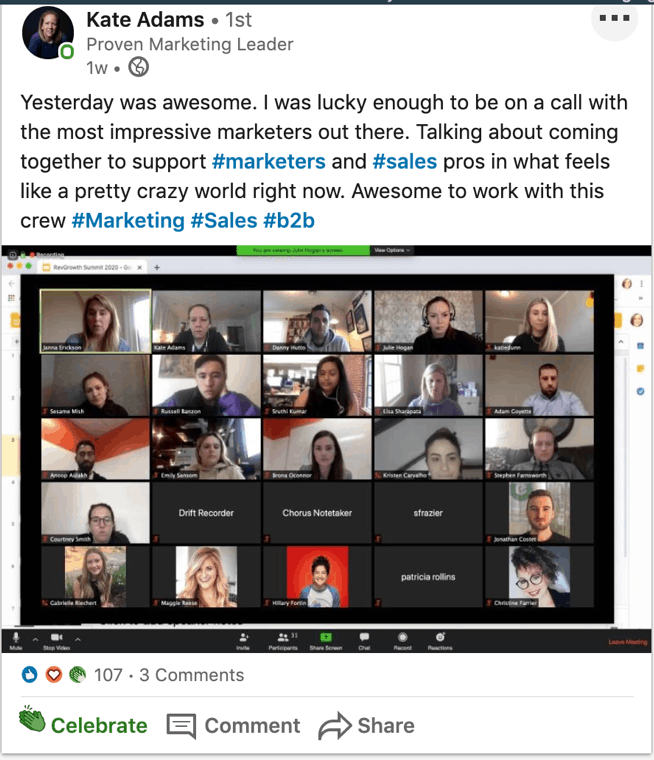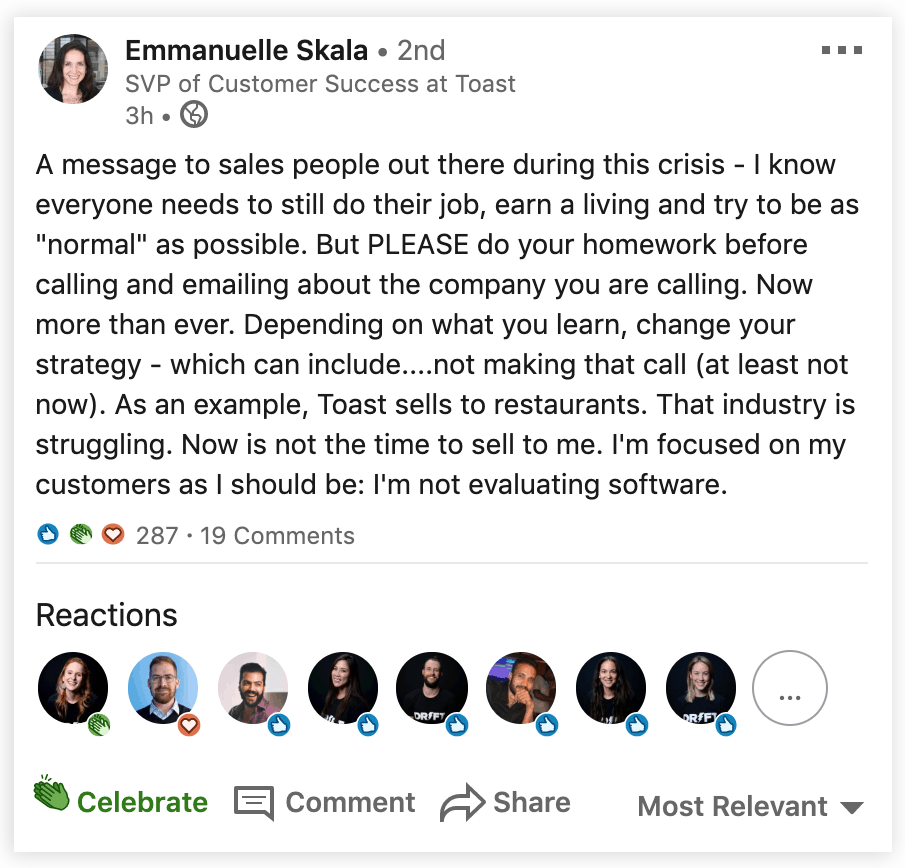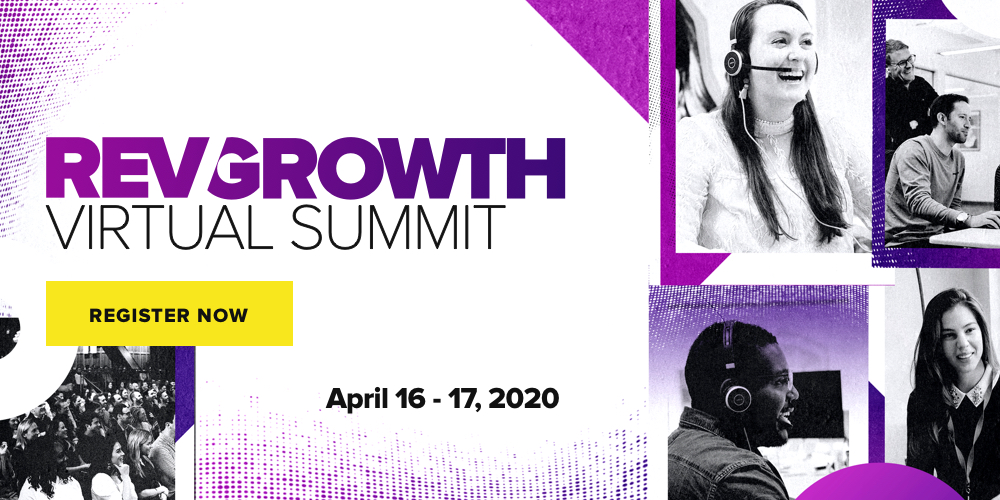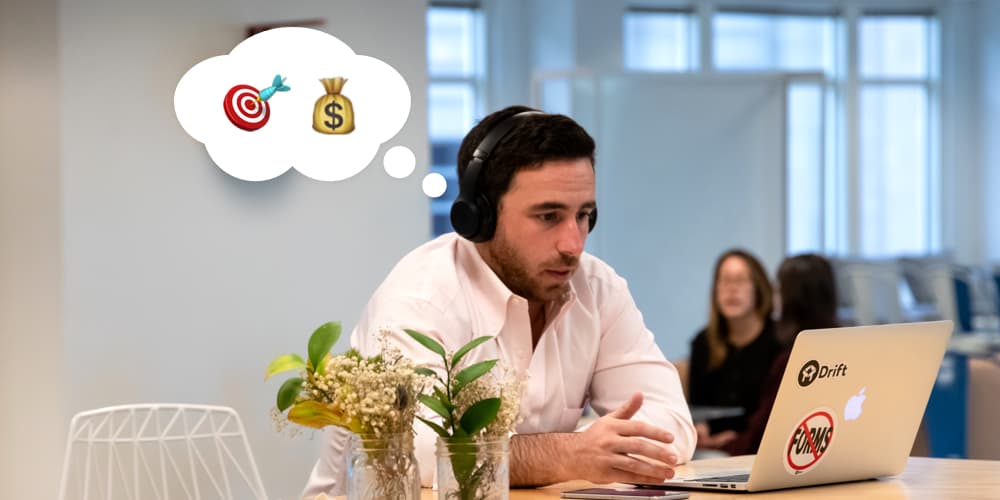
I’m a realist.
When you’re in demand generation, you have to be.
I deal in numbers. I make decisions based on results. And my compass is my pipeline ?
New realities call for new thinking. So, in the face of COVID-19 and disruption to not just my way of life, but the way I work, being a realist isn’t enough to do my job well.
To lead demand generation in our current climate, you need to be a creative realist ?
That’s right my funnel nerds, my dashboard-loving VPs, my forecasting gurus – we need to innovate or get left behind.
With a lack of in-person events and sponsorship opportunities leaving a gap in demand gen’s pipeline, it’s time to go back to the drawing board. Well, kind of.
What I’m really thinking about is what I can do with my event and sponsorship budget to get the kind of results I need to keep my pipeline healthy. And that means I need to get creative.
I’m sure a lot of you are in the same boat. So, in the interest of transparency and moving forward through the pain together, here’s a rundown of how you can approach reinvesting your event and sponsorship dollars this year ?
Invest More in Your Digital & Integrated Campaigns
Don’t Go it Alone: Partnerships & Lead Sharing
Arm Your BDRs with Tools to Adapt & Get Creative
Don’t Kill Events. Rethink Them.
Give Back to Your Customers & Invest in their Success
Invest More in Your Digital & Integrated Campaigns
Now is the time to invest in digital marketing tactics that create reliable wins.
And there’s a lot of digital marketing strategies that I’ll be putting my budget behind to generate those wins:
- Digital advertising: A lot of marketers are going to be looking to up their digital advertising game. What will separate the winners from the losers is having a strong strategy and coupling that with creative assets and messaging to set your company apart. Don’t just throw more money behind ads and call it a day. Experiment and put the time and resources behind your paid ads to get the most bang for your buck. Try different assets. Experiment with copy and channels. Here are some lessons from the Drift team on designing the perfect PPC play.
- Email marketing: Email is most certainly not dead. Keeping nurture flows running in the background alongside manual outreach is key. But, putting a good email marketing program in place can take a village. My tip: Get some amazing marketing operations people to keep your demand gen team honest. Check out this webinar I did with our marketing ops manager Lynn Tan on building and measuring high ROI email marketing programs.
- Tools & templates. Tools are a perfect example of the kind of digital content that can yield high returns for demand gen teams. Here’s why: 1) Tools are great self-service learning opportunities; 2) They help prove the value of your brand, product, or services; 3) They are great for identifying pain points. Templates also add a lot of value as they’re reusable and facilitate learning. And, you don’t have to start from scratch: Try looking at the content you already have and building out templates for that content so people get more mileage out of it.
- SEO & organic content: You need a steady flow of content to maintain organic traffic. But you also want high-quality, SEO-rich content that will pay off in the long-term. Basically, you want good content at a frequent-enough pace. That’s why you need to invest in content creators and SEO specialists that can help deliver on both these types of long- and short-term wins. Invest in tools that can help these team members scale their efforts and make more strategic decisions around the content they create (i.e., don’t just write in a vacuum). We use a few vendors for this, but one of my favorites is Ahrefs. It’s intuitive, easy-to-use and offers a more strategic approach to content creation.
- Content syndication. With physical events and sponsorships out of the picture, demand gen teams are essentially losing a marketing channel for the year. Now is a good time to look into syndication opportunities for your high-quality content. Content syndication is a way to get content in front of people outside your typical channels. Depending on your time, resources and budget restrictions you can do one of two things, paid syndication or manual syndication:
-
- Manual syndication: Sometimes it pays to do the legwork. This might not always be scalable. But it can have a huge impact. Channels like Medium are a great place to start. You can also dip into your c-suite network and have them publish content on their personal LinkedIn that leads back to your site. Just be very careful about duplicate content, as this can get you in trouble.
I also want to touch on the importance of getting integrated campaigns right – especially for growing marketing teams and for remote work.
Integrated marketing campaigns are the best practice for keeping your team on the same page. An integrated campaign approach:
- Integrates all your teams’ efforts toward the same shared activities.
- Ensures teams are working towards the company goals.
- Increases the impact of activities within the team.
- Reduces the volume of work and instead focuses on the quality and purpose of the work.
Basically, using an integrated approach ensures nothing is done in isolation – which is ideal when life throws a wrench in your pipeline goals (and disperses your team).
At Drift, we’re using Asana to help keep our integrated campaign machine running. How does your team manage integrated campaigns? Shoot me a message and let me know. I’d love to hear how other people are juggling cross-functionally right now.
Don’t Go it Alone: Partnerships & Lead Sharing
Why minimize your marketing effort to just your company and team? Use your network of customers, partners and peers to amplify your efforts.
Partnerships are a huge piece of the Drift Marketing machine. Whether it be with customers, integration vendors, etc. – a lot of what we do is built on partnerships. Not only does it give greater value to the content we create, but there’s a ton of lead sharing and audience sharing opportunities.
If you’re looking to address a possible dip in leads due to event cancelations, lead sharing partnerships are a great way to make up the difference. From webinars to eBooks to virtual events, there’s a lot of different ways to go about this.
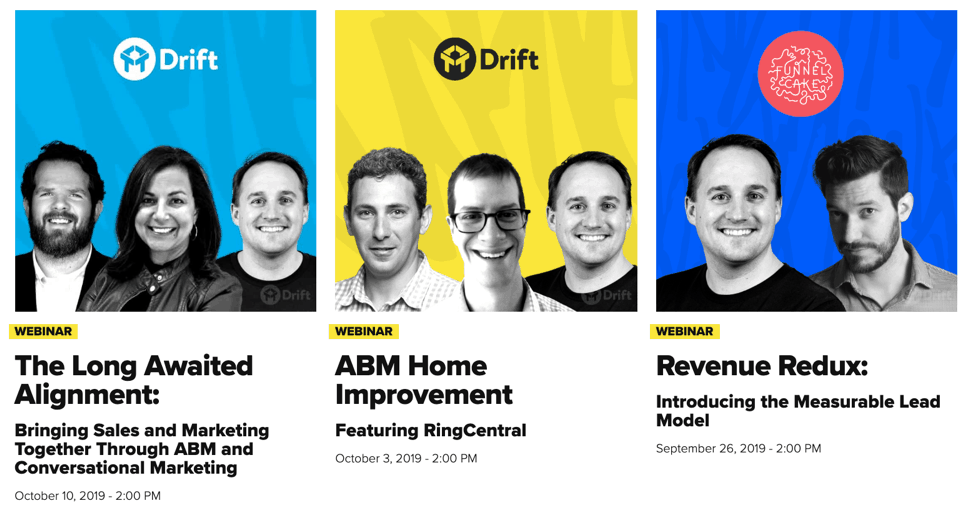
But, before you dive into any lead sharing, make sure you have the right process in place. I’ve said it before and I’ll say it again: We have an amazing marketing ops team.
Lynn Tan, our Senior Marketing Operations Manager, is well-versed in all things lead sharing. I conferenced with Lynn a while back to make sure we had ground rules for all lead sharing opportunities moving forward.
Here are the guidelines we live by:
- All parties should have a similar audience/ideal customer profile (ICP)
- There should be an equal amount of promotional effort from all lead share partners
- All companies should have proper documentation and policies around GDPR
- All partners should have an understanding that spamming and hounding leads – the second they become available – won’t benefit anyone. Make sure you have an understanding with your partners on how you’ll follow up and guidelines for coordinating follow up in a human way.
With ground rules in place, it’s time to get creative. Here’s how to use your budget to maximize these lead share opportunities in the best way possible:
- Put ad dollars behind promoting each of these webinars and events
- Invest in higher quality video equipment for internal speakers to elevate the quality of your webinars
- Host sponsored webinars as part of your webinar strategy
Arm Your BDRs with Tools to Adapt & Get Creative
Marketing can create the campaigns, write the copy and set up the workflows in the background. But without a strong BDR team to follow up on leads and conversations, it’s all for nothing.
A while back I wrote about some of the killer emails our BDRs are using to break through the noise ?
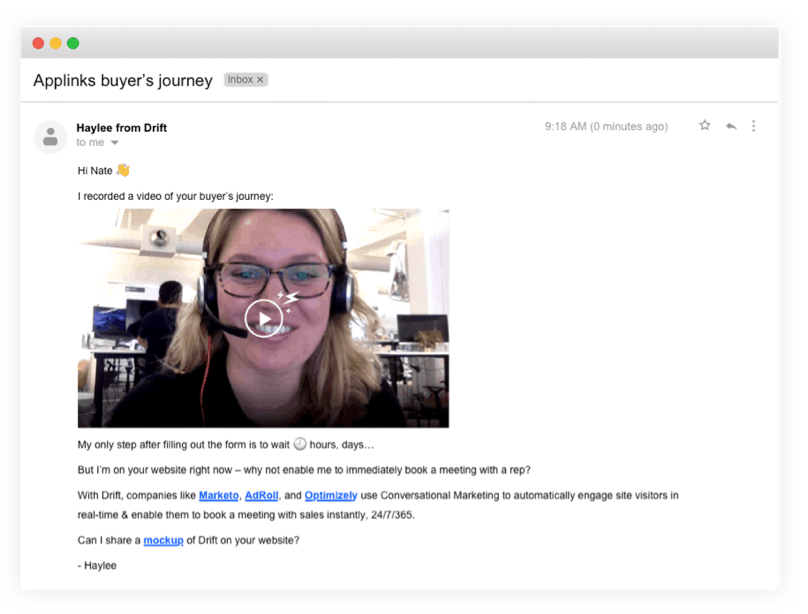
With more buyers going virtual, email continues to be a huge channel for our BDR team.
Plus, one of the great things about Drift is that we get to use the same tools as the marketing and sales organizations we sell into.
As we rely more on digital channels to generate opportunities, scaling where possible is essential. With Drift Email, our BDR team can automate their reply management to update contact information, route their outreach emails to sales reps, and source new leads from OOO replies. Not only does this give our sales team up-to-date info, but it makes ops happy to see such a healthy database.
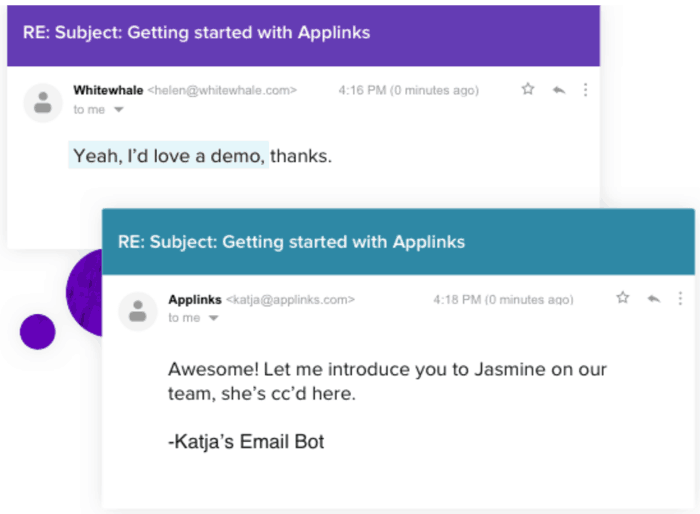
Video is also a big part of our BDR strategy right now.
Showing your face when face-to-face isn’t an option is a pro-move. A lot of our reps are already doing this, but they’re getting more and more creative with their delivery and messaging:
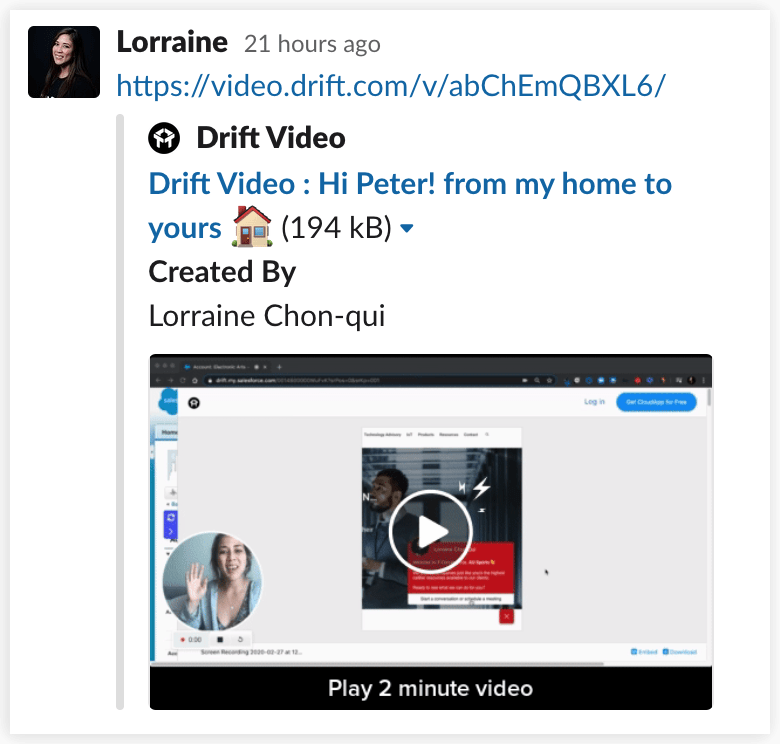
We try to keep our messages casual and intimate. That’s why I really dig Lorraine’s approach here: “From my home to yours.” It’s simple, it’s sweet and it’s the right kind of tone for right now.
With everyone making the switch to digital, our BDR team is constantly looking for new ways to bring our message to the market. If your Slack channel isn’t filled with questions like this currently, it’s time to ask them yourself ?

Don’t Kill Events. Rethink Them.
It’s easy to focus on a lot of the negative today. But, I think as marketing leaders we can all agree: It’s moments like these that show your team’s true colors.
And I’m so impressed with how Drift’s marketers have come together.
But, let me tell you about THE moment that struck me in particular:
We were having a tough week. The last sponsorship and in-person event we were planning to attend had been canceled. Yes, you know which week I’m talking about. The one that blew up your LinkedIn feed and email inbox. I had that same week.
As I was sitting with our Head of ABM, Meghan, talking about new ways we could fill that pipeline gap for all these events, she stopped me.
“You know, a lot of people are having this same conversation right now. I mean, we’re not the only ones who had these events canceled on them. And a lot of people are going to miss the content from these conferences.”
“And?”
“What if we teamed up?”
One mass email – and a ton of hell yes’ – later, and that gap seemed a little less daunting.
Together with dozens of other companies from the SaaS, marketing and sales community, we announced the launch of Drift’s biggest virtual event to date: RevGrowth.
Two tracks bringing together the future of marketing and sales. Zero barriers to entry. A new kind of event with the backing of some of the best and brightest in their field:

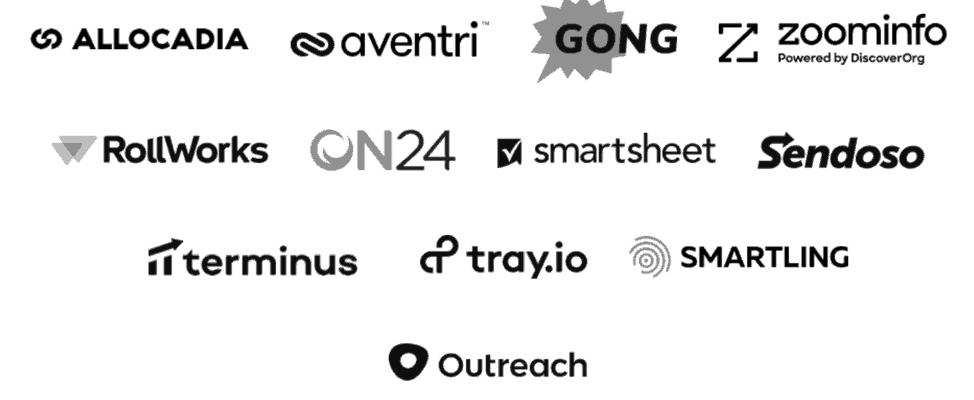
Instead of siloing our events and segmenting our audiences, we decided that not only would partnering generate greater pipeline opportunities, but it would be a MUCH better experience for all our attendees.
So here’s the takeaway: Events aren’t dead. Community isn’t dead. And there’s still a ton of innovative and amazing things possible you can do now to give your audience the content they want. Don’t kill events. Rethink them.
Give Back to Your Customers & Invest in their Success
I want to end on an important note that can easily get lost in this kind of “pipeline growth” conversation. Specifically, I want to talk about marketing’s responsibility to invest in their customer’s success.
As I was writing this article, I came across this post from a leader at a fellow Boston-based company, Toast. It was from their SVP of Customer Success, Emmanuella Skala, and it was a vital message on a number of levels:
First, it was a reminder to be human. Second, it was a quick study in the importance of doing the right research and not treating people like leads, or opps, or MQLs, or what-have-you. Be sensitive, because everyone is waking up with more questions concerning the future than ever before.
But it was also a light bulb moment: “I’m focused on my customers as I should be.”
I couldn’t agree more.
So how can you invest in your customers as a marketer? Here are a few ideas:
- First and foremost: Give your customers your time! Call them. Learn about their success stories and struggles. Dedicate time to their success.
- Introduce communities that offer exclusive content and learning opportunities to your customers.
- Create a Customer Advisory Board, so customers are more involved in the development of new products and services.
- Listen to customer feedback and communicate how you’re using that feedback for future product roadmaps.
New business is an important part of the pipeline puzzle. BUT, expansions, up-sell, cross-sell, and most importantly – retention – keep a business afloat.
Remember that investments in your customers are just as important as any investment in new opportunities.




